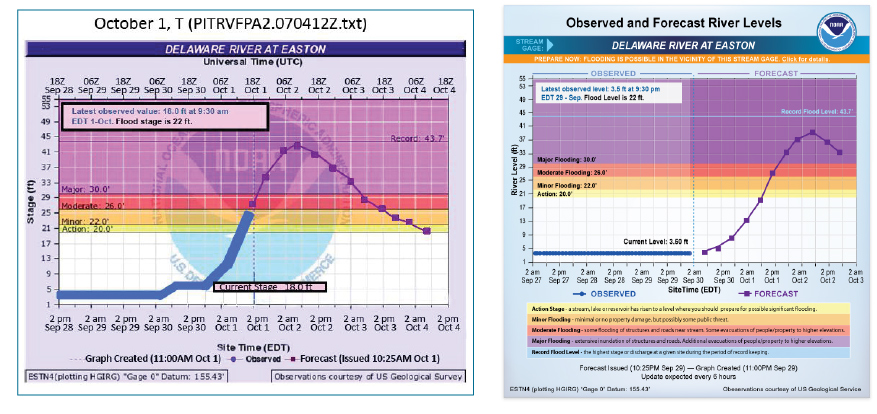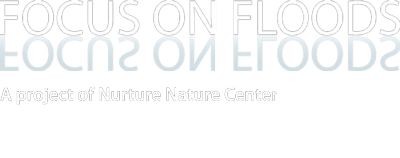Flood Risk and Uncertainty: Assessing NWS Forecast and Warning Tools
NNC’s social science project, “Flood Risk and Uncertainty: Assessing the National Weather Service’s Forecast and Warning Tools,” supports NOAA’s new Weather-Ready Nation initiative, designed to help the nation become better equipped to prepare for and respond to weather events.
The study, which includes focus groups and surveys of individuals living in flood-affected communities in New Jersey and Philadelphia, has two major research questions:
- How do people living in the Delaware River Basin use NWS flood forecast and warning tools in understanding their flood risk?
- How can these tools be improved so they better motivate flood preparedness and warning response?
NNC’s partners on this social science project include NWS Middle Atlantic River Forecast Center and the Weather Forecast Offices in Mt. Holly, NJ/Philadelphia, PA and Binghamton, NY, as well as Dr. Burrell Montz, a hazards researcher from East Carolina University with expertise in flooding issues.
To conduct the research, NNC organized a series of eight focus groups among individuals living in the urban City of Easton, Pennsylvania, and the more rural community of Lambertville, NJ. The focus groups centered on an extreme weather scenario, “Hurricane Rachel,” that incorporated use of several NWS flood forecast and warning tools.
Tools studied include:
- the Advanced Hydrologic Prediction Service, which provides information about river heights during flood events (water.weather.gov/ahps);
- flood watch and warning messages issued in advance of forecast flood events; and
- a new “ensemble forecast” system that shares a range of forecast predictions (erh.noaa.gov/mmefs).
Through discussions around this scenario, participants in focus groups provided feedback about how they understand and respond to these tools. Specifically, the focus groups aimed to reveal how people understand messages about uncertainty in forecasts, as well as how the timing, specificity, wording and graphic design of messages influence readability and understanding. Based on participant feedback, the project team has recommended revisions to these flood forecast and warning tools, in order to make the tools easier to understand and more likely to motivate preparedness actions.

The first round of focus groups was held in June 2013, and the second was held in December 2013. View the final report here.
 Findings from this study include recommendations for how NWS can revise its various river flood forecast products so they are easier to use and understand, and more likely to motivate people to take protective actions during a flood event. The study also shares findings about how people like to receive and share flood risk information. A series of three short videos were created that summarize findings for NOAA/NWS, emergency manager, and public audiences.
Findings from this study include recommendations for how NWS can revise its various river flood forecast products so they are easier to use and understand, and more likely to motivate people to take protective actions during a flood event. The study also shares findings about how people like to receive and share flood risk information. A series of three short videos were created that summarize findings for NOAA/NWS, emergency manager, and public audiences.
This material is based upon work supported by the US Weather Research Program within NOAA/OAR Office of Weather and Air Quality under Grant No. NA12OAR4590115.
